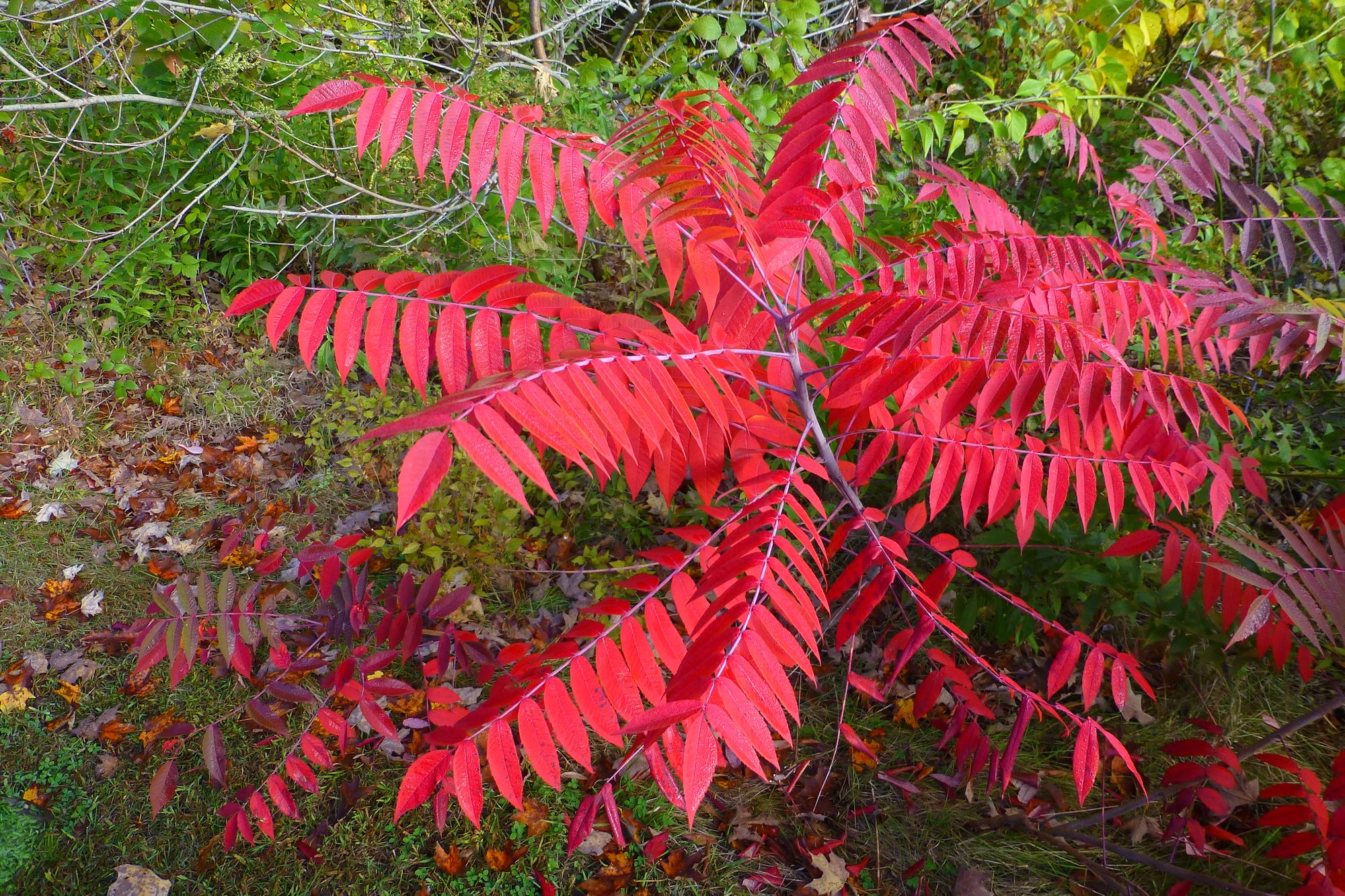Aid for What Ails - Yes, Sumacs
by: Paul Hetzler
One of the most vibrant fall leaf colors hails from a humble source. While many people consider it a weed, and some even think it dangerous, the common staghorn sumac treats us to a brilliant, neon-red-orange burst of color this time of year. Its reputation as a nuisance is well-founded, as it can spread by means of its root system, into fields and pastures, but sumac is not a hazard.

When I was a kid, Dad showed me poison ivy and also warned against poison sumac (for some reason, poison oak didn’t make the cut). Just as “Marco” always went with “Polo,” “poison” was followed by either “ivy” or “sumac,” at least in my mind. Having led innumerable nature walks, I know that many other folks also grew up equating sumac with poison. Staghorn sumac is not only safe to touch, it tastes great.
Mind you, poison sumac does exist. It’s just that very few people ever see it. If you do, as I have, you’ll be ankle-deep (at least) in water. Poison sumac is an obligate wetland plant, requiring saturated, and very often flooded, soils. Poison sumac is a swamp-thing, and other than the fact it has compound leaves and is a shrub, it bears little resemblance to the sumac we see every day.
Poison sumac has loose bunches of berries that turn whitish when mature, and they droop down. “Good” sumac, on the other hand, has tight clusters of red berries proudly held up like Lady Liberty’s torch. Poison sumac has shiny leaves, smooth glossy twigs, and its leaves turn yellow in the fall. In contrast, staghorn sumac has fuzzy twigs. Its matte-finish leaves turn a vibrant red in autumn.

There are several species of “good” sumac, and all have the same red berries held aloft. The stuff that makes apples tangy is malic acid, and sumac berries are loaded with this tasty water-soluble flavoring. To make “sumac-ade” all you need is a plastic bucket full of sumac berry bunches (don’t pick them individually), then you fill the bucket with cold water. Agitate the berries a few minutes and strain through a clean cloth. This leaves you with a very sour pink beverage, which you can sweeten to taste.

Because malic acid is water-soluble, sumac berries lose some (but by no means all) of their flavor by springtime. The next time sumac’s bright red fall “flag” catches your eye, consider stopping to collect some berries to make a refreshing drink. And the sooner the better.
By Paul Hetzler
Paul Hetzler until recently was a Horticulture and Natural Resources Educator at Cornell Cooperative Extension, in Canton, NY. He writes a series of humorous and informative essays for a number of newspapers and journals. Subjects range from trees, gardens, insects, native plants, water, wildlife and other natural resources topics. Paul is also the author of "Shady Characters," a collection of humorous nature essays and the unique website “Where the Wild Words Are” – check it out!






Please click here if you are unable to post your comment.